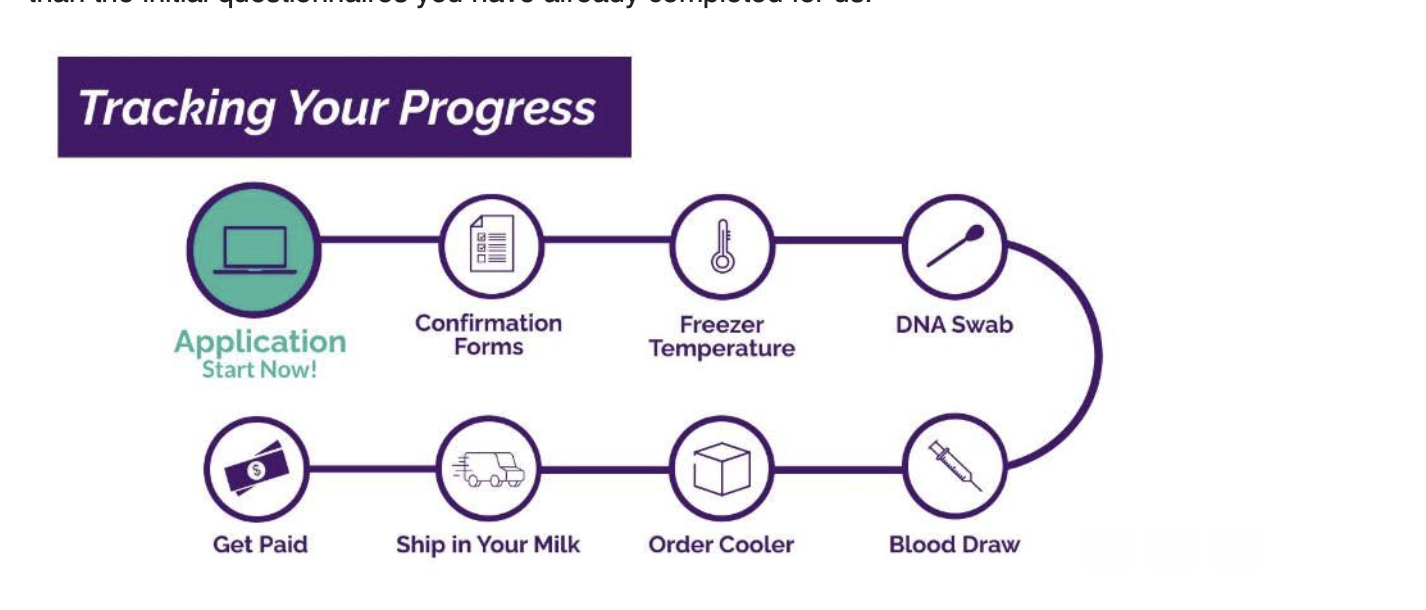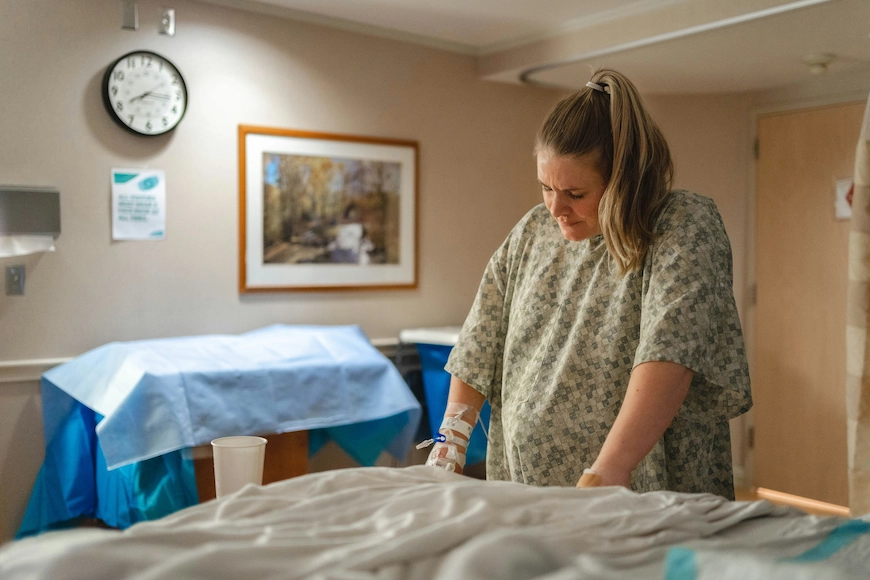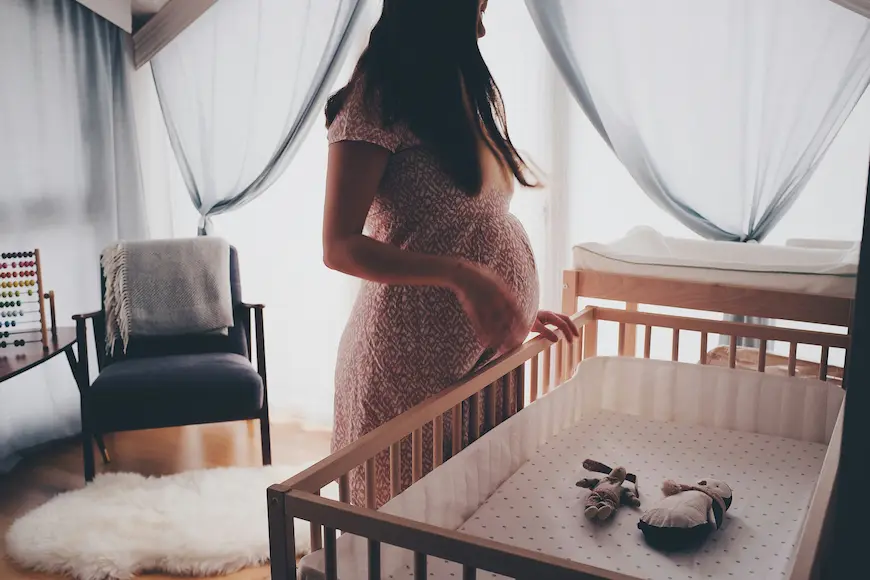This post contains affiliate links. If a purchase is made by clicking on a link, I will get a small commission at no extra cost to you.
Did you know that some companies will compensate you for donating your breastmilk? It’s a win-win: your milk helps babies who need it most, and you get a little financial boost for all that pumping time and effort. In this post, I’ll break down how it works, where you can donate (and actually get paid), and what to know before diving in.
Once our twins were around 9 months old, I looked into donating breastmilk. Our twins were exclusively breastfed for the first six months, after which I introduced solids while continuing to breastfeed. I felt confident donating at this 9-plus-month stage, as our twins were healthy and exceeding their growth chart expectations at each pediatric visit. After some research (and waiting), I discovered Tiny Treasures milk bank in California. Tiny Treasures Milk Bank takes donated breastmilk and helps get it to premature and seriously ill babies who really need it. The milk is turned into human milk–based fortifiers and other products that give these little ones extra calories and nutrients. Hospitals around the world use them by mixing them with a mom’s milk—or donor milk if needed—to help fragile babies grow and get stronger.
I started the donor application in June of 2024, and became qualified to donate milk in August of 2024. I was still breastfeeding our twins while donating and concluded my donation journey in January 2025.
Breastmilk Donor Application Process
The process starts with filling out an application on their website. If they are not taking new applications, keep checking back as they do open back up. Once you are able to submit your online application, after a few days, you’ll receive email correspondence as they continue the screening on their end. They will also require your primary care or OB doctor and your baby’s pediatrician to complete forms.
They will send you a test kit once your forms have been signed. The kit includes a thermometer to test your freezer temperature, a DNA swab, and materials for your blood draw. Through the donor portal, I scheduled a phlebotomist to come to my home to collect a blood sample. The phlebotomist will ship the blood sample overnight to the lab. You are in charge of shipping your DNA sample right away, and they will provide a pre-paid shipping envelope.
The team at Tiny Treasures is great about communicating where you are on the pre-approval process, so make sure to check your email frequently to help the process move along quickly.
Throughout the journey, you’ll have a dedicated representative you can reach out to with questions. I asked about things like whether I could drink kombucha, or if certain medications were safe to take for allergies or headaches.

Pumping for Donation
Once you have been fully qualified (it should take 4-6 weeks), you are ready to start collecting your milk. If you previously pumped and froze your breastmilk during the screening process, they can accept that milk, they’ll tell you what date milked pumped is acceptable to send in. The minimum donation requirement is 2800 ounces within a six-month period. If you are unable to continue the donation process, you can simply contact them and they will close out your file so other moms can donate.
They will provide everything needed: a shipping label, a cooler, a freezer thermometer, breastmilk storage bags, and a permanent marker (to write date and time).
Each time you pump for donation, make sure your hands are clean, your pump parts are fully sterilized, and your breasts are clean as well. Your milk is going to fragile babies who are fighting for their lives, so keeping everything sanitary is incredibly important.
Having a bottle sanitizer with a dryer makes the routine much easier. I washed all pump parts with soap and water, then sterilized them before each use. I also kept a dedicated storage system for all my pumping accessories to stay organized.

Storing Your Milk
After you finish pumping, label the storage bag with the date and time. Open the bag carefully without touching the inside, then pour in your milk. If you can fill the bag close to 8–10 oz, even better—it helps you use fewer bags overall.
Try to remove as many air bubbles as possible, then lay the bag flat in the freezer. Putting something lightweight on top can help it freeze flat; otherwise, it may freeze into a rounded shape that makes it difficult to pack later. You can use a cookie sheet or a glass storage container to place on top of the milk bag until it freezes.


Shipping the Milk
You may start to run out of space in your freezer, which then you’ll want to schedule a pickup through your donor portal. Breastmilk is shipped overnight to Prolacta and they will begin to conduct high level inspections of your milk.
I highly recommend wearing gloves while assembling the frozen bags because your hands will start to go numb after trying to Tetris-assemble breastmilk bags in the cooler.
I scheduled a FedEx pickup, and it was incredibly easy. I submitted the request online, and FedEx came right to my door. In the pickup description, I wrote “medical supplies” so they know it must be shipped overnight, just as an extra layer of precaution.
Make sure to update your representative any time you get sick (cold, flu, etc.), because that can make your milk temporarily ineligible. They provide a “washout period” bag—but honestly, I’m not sure why anyone would store milk that they know will be rejected.

Payment
Once your milk arrives, it usually takes a few days up to two weeks for them to update your donation quantity and payment amount in your donor portal. You get paid $1.20 per ounce of milk that has passed inspection via direct deposit (ACH). If you are able to donate 2800 ounces, that equates to $3,360.00!
In Conclusion
If you've got more milk than your baby needs and you’re open to the idea, breast milk donation is a great way to help other families while putting a little extra cash in your pocket. As long as you’re careful about who you work with and you feel good about the process, it can be a surprisingly positive experience. Ultimately, it’s your call — and whatever you decide, it should be something that feels right for you, because it is a lot of time and work.
I hope you found this post helpful! Check out my blog post on storing breastmilk in mason jars (for personal use of course).
Any content provided by my blog, Merry Madden is in my opinion and is not intended to replace medical advice from a healthcare provider.
.webp)






